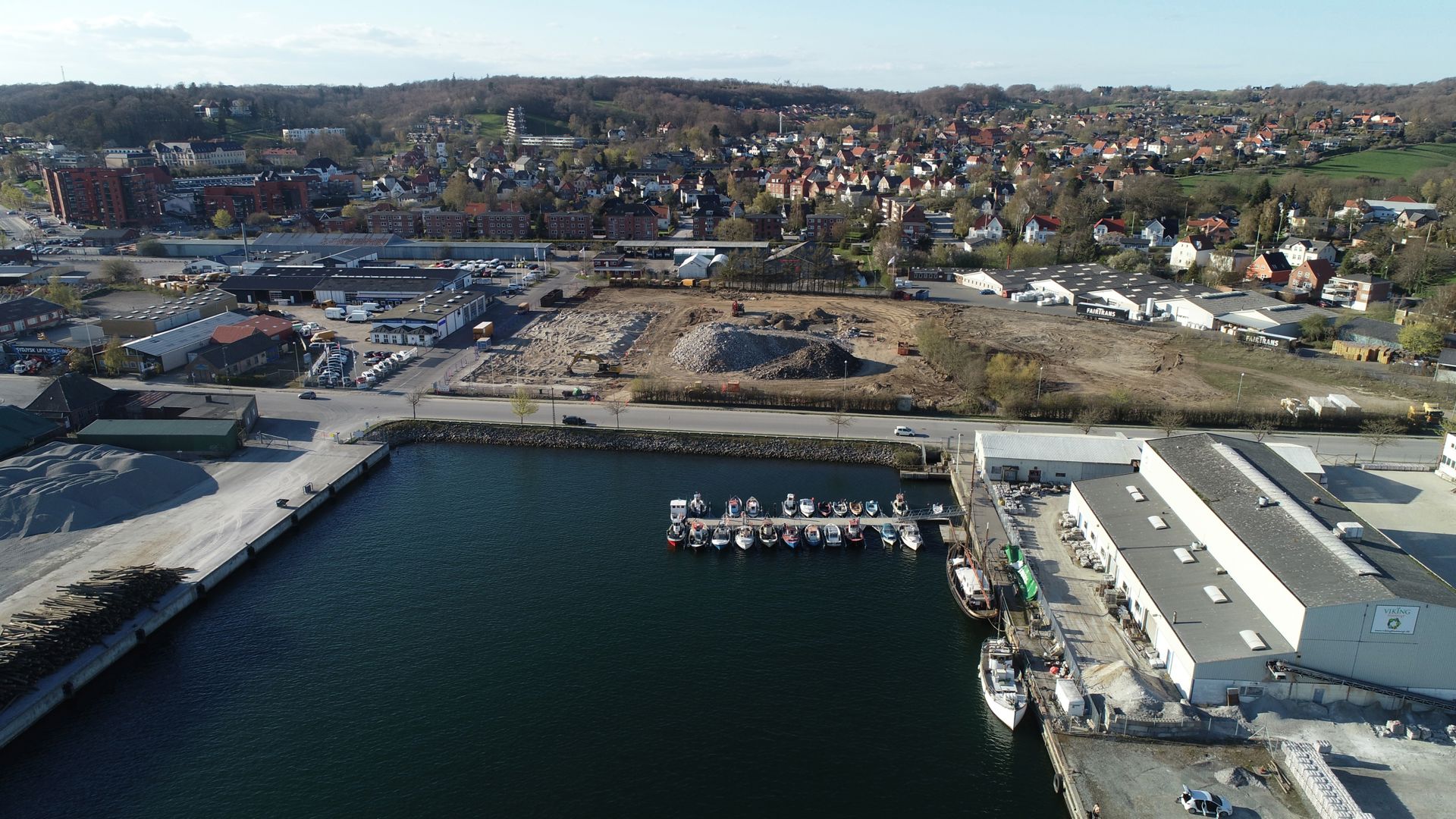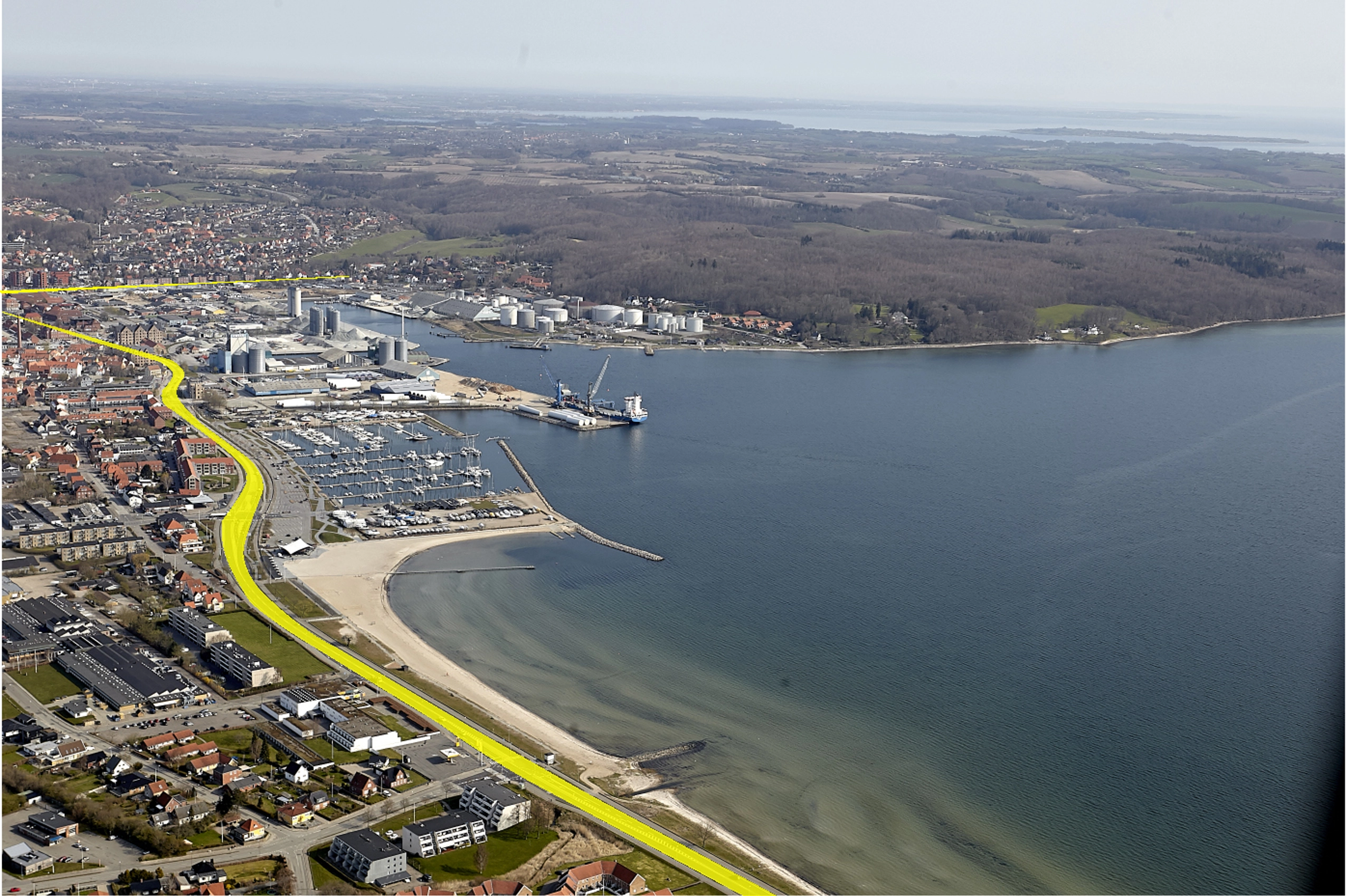Port of Aabenraa
Read more about Port of Aabenraa in Aabenraa Kommune here.

The Port of Aabenraa is a commercial harbour with two kilometres of quay, a large crane capacity and a water depth of up to 11 metres as well as a marina. In spring 2021, Aabenraa Municipality purchased the area “Nord for Kilen” from the Port for urban development, whereas the Port acquired the former power station block 3 at the Port of Ensted, EV3, with a view to continuing its future-proofing of the Port. The area “Nord for Kilen” can house hundreds of homes as well as cafes, restaurants, specialty shops, open spaces, streams and storm water reservoirs – and not least a new museum for South Jutlandic art and seafaring history.
Up until today, the Port of Aabenraa has been characterised by traditional activities, focussing mainly on shipping and unshipping of goods. Such activities are the lifeblood of much of Southern Jutland’s businesses and agricultural sector, both of whom receive and ship raw materials and products via the port.
The Port of Aabenraa is the only remaining commercial port in Southern Jutland, and today traditional activities are being supplemented with new activities at the Port of Ensted, which in the future will house production activities. For example, the largest industrial gas company in Northern Europe, Linde Gas, plans to build a large power-to-X facility at the Port of Ensted capable of producing the climate friendly hydrogen which other companies in the area will need to produce green, hydrogen-based products.
Since the Middle Ages, the Port of Aabenraa has been a gateway to the world. The port was mentioned for the first time on 3 May 1257, when King Christoffer I exempted the Cistercians at Løgumkloster from duties when they called into port at Aabenraa. On 1 May 1335, Aabenraa was granted a municipal charter, and in the following 500 years, the port saw both ups and downs.
After the end of the English Wars in 1814, the town’s merchant navy grew significantly. Especially the large ship owners with connections to Hamburg and China were responsible for the increased activity and prosperity. Beginning in the 1800s, the port thus grew into its present form. In 1889, the railway reached the port, making it possible to ship timber and other goods directly to and from the Old Harbour (Gammelhavn).
The South Harbour was built in 1899 to accommodate the need for more quay space, and subsequently, the Old Harbour was modernised and the New Harbour at Kilen inaugurated in 1925. Later, the depth of the water was increased in parts of the port, which has also been equipped with tanker jetties. The Southern Jutland Quay (Sønderjyllandskajen) with a depth of 11 metres was built in 1983, and a Ro-Ro terminal was added in 1996.

